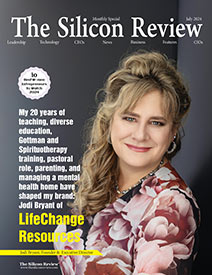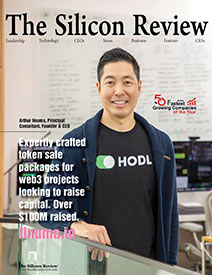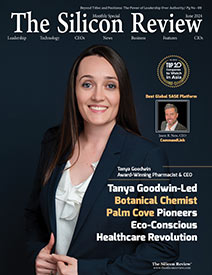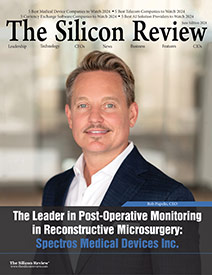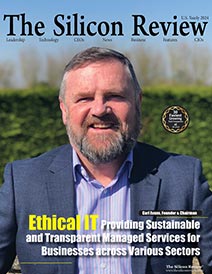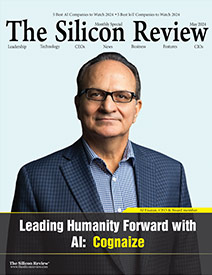‘We Help Organizations Uncover the Meaning in the Data from their Information Systems’: Dave McComb, President and Co-Founder of Semantic Arts
The Silicon Review
![]()
“We enable the semantic capabilities by reducing and simplifying the models, which, in turn, reduce application code, end data conversations, and lower integration complexity.”
Digital transformation (by optimizing data) for greater strategic value is evolving at light speed. Desire to capture, organize, and analyze information with greater clarity for improved business decisioning is a huge challenge. One of the biggest trends to harmonize data is to ask complex questions across the enterprise data ecosystem (internal and external sources). More companies are turning to semantic solutions or the “meaning of data” by adopting knowledge graphs to connect information more efficiently to achieve. This is a big shift away from traditional data management approaches that are inherently rigid, brittle, and inflexible to change. Business agility, innovation, and growth foundationally begin with accurately and expediently interpreting information from all schemas and forms.
In light of the foregoing, we’re thrilled to present Semantic Arts — an information systems consulting firm, specializing in semantic knowledge graph implementation and strategic modeling architecture to future proof your enterprise. It operates worldwide.
The company was founded in 2000 and is based in Fort Collins, Colorado.
To highlight and further understand what Semantic Arts stands for and seeks to explore in this segment, I sat down with Dave McComb (president), who co-founded the company.
Below is an excerpt.
Q. What makes Semantic Arts unique? And how does the company help organizations transition to a newly emerging paradigm of information systems?
Semantic Arts have been guiding clients in this paradigm shift of thinking by bringing semantic technology and knowledge graphs to enterprise architecture for over 20 years. This has been our exclusive focus. Over those two decades, much has been learned. As a result, a refined implementation methodology that ensures extendable and sustained success has emerged.
Executives lament data silos but vendors reinforce yet another software or SaaS solution which compounds integration debt and more complexity. Semantic Arts shows those critical decision-makers with their data the value data-centric principles represent. We employ a “Think Big” (Enterprise) / “Start Small” (Business Domain) modeling execution approach in tandem. When doing both in parallel, we avoid recreating the very point solutions and silos that organizations are attempting to abandon. We shepherd our clients during the implementation process by imparting our knowledge of semantic-based system implementation coupled with knowledge graph integration to accelerate digital transformation objectives. Of equal importance, this model allows for machine learning readability and eventual enterprise scalability.
Q. Implementation and integration projects consume tens to hundreds of millions of dollars and fail more often than they succeed. How effectively does Semantic Arts address this?
At Semantic Arts, we address integration costs as a core problem. Between 40-60 percent of IT budgets is spent on integration of some manner. Whether built in-house or acquired, the result of decades of software implementation is a landscape of silos, immensely expensive to integrate after the fact. This application proliferation is the root cause. Enterprises have hundreds of thousands of applications requiring a hairball of integration complexity to allow information exchange. Each application has its own, completely arbitrary data model: different structures, different labels, different levels of abstraction. Every introduction of a new system or application raises the cost even more, and integration cost spirals ever upward. Failures occur because application software is complex containing many millions of lines of code. Changes to code are fraught with risk. This vicious cycle of complexity causes unwanted software developer behavior. They begin to believe coordination and conforming are too laborious thereby isolating themselves to solve their problems to get things done fast. Again, another spiral of further silo-ization.
To address this growing integration and implementation cost burden, Semantic Arts tips the priorities in a different direction to begin coaching on the journey of becoming data-centric. Our experience has proven that even complex enterprises have a single, simple model that all applications data models can conform to, and eventually, application functionality can be implemented directly on this shared model. Over time, silos can be retired, monolithic applications decomposed, and replaced. It is an implementation strategy that finally offers legacy rationalization solutions.
We show how to make data a durable, reusable, and interoperable asset by leveraging industry-based standard graph databases. We show how this approach can complement existing digital strategies and meet business objectives. We enable the semantic capabilities by reducing and simplifying the models, which, in turn, reduce application code, end data conversations, and lower integration complexity. This shift in thinking puts data at the center.
As a result, contextual understanding of the information enterprise data-scape emerges. In short, data from sales, finance, supply chain, product, raw materials, customers (or whatever is meaningful) can talk to each other and be analyzed in a more seamless manner within a graph. Think of this capability as a Rosetta Stone for enterprise knowledge sharing and innovation acceleration.
Q. That’s not all Semantic Arts does. What are its other focus areas?
Another critical area of digital transformation is enabling emerging technologies to automate, personalize and create self-service capabilities for employees and customers alike. Semantic solutions, including the implementation of knowledge graphs, are speeding the ability to data enrichment and data consistency for answering business questions with federated queries across systems. Understanding how things relate to one another and are interconnected with a knowledge graph delivers broad benefits. Areas our data-centric approach complement include Big Data, Data Lakes, Data Fabric, NLP, Machine Learning, IoT, Smart Contracts, Application Rationalization, Legacy Modernization, and Digital Twins.
Q. Where does Semantic Arts stand at the moment? And what does it strive to achieve next?
Semantic Arts is adding staff to our professional implementation and advisory services as well as expanding our global client footprints with the likes of Dupont, Siemens, Amgen, and Morgan Stanley. Much like Gartner predicts, we envision growth in the adoption of knowledge graph application and semantic solutions among multiple industries (financial, pharmaceutical, healthcare, medical products, and manufacturing). Something we see trending as organizations move beyond the initial stages of data-centric architecture concepts, we will see a model-driven (low code / no code) movement continuing to evolve and mature. Our experience is that model-driven UI will offer high value since 90 percent of most applications can be generated from a model without application code. Keep in mind this eliminates 90 percent of your code, 90 percent of your defects, and 90 percent of future maintenance cost. We also see efficiency opportunities for model-driven identify management and authorization security innovation. Traditionally, each application defines a set of “roles” that determine what people can do. One way or another, users must be assigned to roles on an application-by-application basis (and removed in the event they leave the firm). With a single shared expression of the model (which represents data centricity), model-driven artifacts are simpler and more consistent, making for orders of magnitude reductions in cost and complexity.
Q. No doubt Semantic Arts is charting new territories in this segment. Given how frequently circumstances change, what plans for transformation are you pursuing to remain relevant now and in the future?
Change is a common element for innovation to flourish. Semantic Arts was 20 years ahead of the curve of creating shared models that populate knowledge graphs. Now the marketplace is catching up. Covid-19’s influence has driven enterprises to press the pedal down to make data a strategically competitive advantage. Truly, we feel the wave has arrived and we’re prepared. Our fourth annual Data-Centric Architecture forum (held virtually) brings thought leaders together for exchange of ideas, development of pragmatic solutions, and adoption success stories that fit into this paradigm shift. We also sponsor monthly Estes Park and Gist Council conference calls to share knowledge of changes among the semantic community.
Dave McComb | President & Co-Founder
Dave McComb and his team help organizations uncover the meaning in the data from their information systems. Dave is also the author of "The Data-Centric Revolution", "Software Wasteland" and "Semantics in Business Systems". For 20 years, Semantic Arts has helped firms of all sizes in this endeavor, including Proctor & Gamble, Goldman Sachs, Schneider-Electric, Lexis Nexis, Dun & Bradstreet, and Morgan Stanley. Prior to Semantic Arts, Dave co-founded Velocity Healthcare, where he developed and patented the first fully model-driven architecture. Prior to that, he was a part of the problem.




